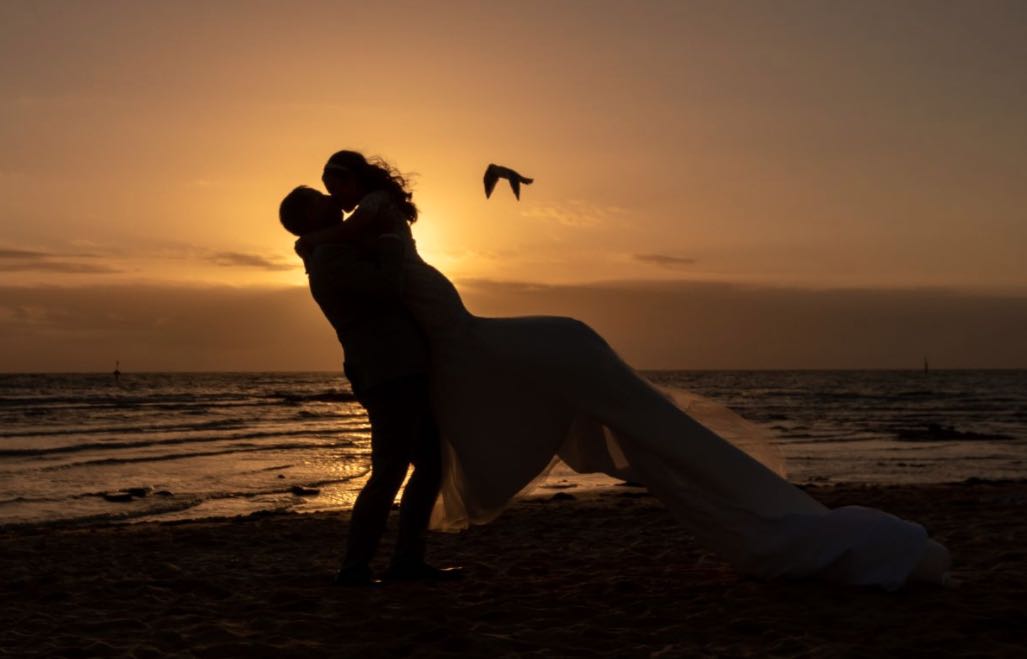Marriage is one of the oldest and most significant institutions in human society, but it’s also one of the most diverse. Whether it’s the traditional vows shared in a church, a legal union recognised by the state, or an arrangement shaped by culture and personal values, marriage takes on many forms. As someone who’s been immersed in the wedding world for years, I’ve seen firsthand how different types of marriages can reflect the values, customs, and legal frameworks of different societies.
While many people are familiar with the idea of a typical “husband and wife” relationship, the reality is far more complex. In some cultures, marriage is not just about love or partnership — it’s about family, religion, and social status. The way marriage is defined and celebrated can vary dramatically from one region to another, and even from one family to the next. Over time, society’s evolving views on love, gender, and relationships have led to a shift in how marriage is approached.
In this guide, we’ll explore the various types of marriages and marriage ceremonies found around the world. From the well-known to the more unconventional, we’ll dive into the different styles and structures of unions that people choose to enter, helping to broaden our understanding of what it means to commit to someone — no matter where you’re from, or what you believe.
Common Types of Marriages You Need to Know About
Marriage is not a one-size-fits-all institution. It takes on many forms depending on cultural, religious, and legal contexts. From civil unions to religious ceremonies, each type of marriage has its unique characteristics and implications. In this section, we’ll look at some of the most common types of marriages you’ll encounter and how they function in various parts of the world.
Civil Marriage: Legal Recognition and Rights
Civil marriages are the most recognised form of marriage in many countries, including Australia. A civil marriage is a legally recognised union that grants the couple specific legal rights and responsibilities, such as property rights, inheritance, and tax benefits. Unlike religious or cultural ceremonies, civil marriages are recognised purely by the state, and no religious affiliation is required.
I remember a couple who came to me for advice on planning their wedding in Melbourne. While they were excited about their big day, they wanted to ensure their marriage was legally recognised, as they were planning to buy a home together. In Australia, civil marriages are not only legally binding, but they also offer the legal protections that come with recognition by the government — something that was particularly important to this couple. The process is relatively straightforward: the couple must submit their intent to marry and exchange vows in front of a celebrant, a process that can be done anywhere, from a park to a formal ceremony venue like Vogue Ballroom.
Religious Marriages: The Sacred Bond
For many, marriage is not only a legal contract but a sacred bond between two people under the eyes of their faith. Religious marriages vary greatly, depending on the beliefs and practices of the couple. Some couples choose to marry in a church, synagogue, mosque, or temple, incorporating rituals and traditions that have been passed down through generations.
A few years ago, I had the privilege of witnessing a beautiful Hindu wedding. The ceremony was rich with symbolism, from the bride and groom walking around the sacred fire (known as the ‘Agni’) to the tying of the ‘mangal sutra,’ a necklace symbolising the union. This religious ceremony wasn’t just about two people coming together; it was a union of families, communities, and traditions.
Religious marriages are common in cultures where faith plays a central role, and they often require adherence to specific customs. These marriages typically include specific vows and rituals, each of which reflects the spiritual beliefs of the couple. The importance of religion in marriage can also mean that the union is not just recognised by the couple but by their wider religious community.
Common-Law Marriage: How It Works in Different Regions
Common-law marriages are a unique concept that you may not immediately associate with formal marriage, but they hold legal weight in many regions around the world. Essentially, a common-law marriage occurs when two people live together for an extended period and hold themselves out to be married, without going through a formal legal or religious ceremony.
When I was working with a couple from Sydney, they shared that they had been together for over five years but hadn’t gotten married in the traditional sense. They wanted to know if their relationship would be legally recognised, especially in the event of a break-up. In Australia, the equivalent of a common-law marriage is a de facto relationship. The couple would have the same rights and obligations as married couples if they had lived together for two years or more.
In other parts of the world, the specifics of common-law marriage can vary. In the United States, common-law marriage is legally recognised in some states, but not all. Typically, for it to be valid, the couple must meet certain requirements, including cohabiting for a set period, presenting themselves as a married couple, and having a mutual agreement to live as spouses.
While common-law marriages provide some legal benefits, proving the validity of such a union can sometimes be tricky, especially when it comes to issues like inheritance or property disputes. It’s one of those things that might seem simple on the surface, but when it comes down to it, navigating the legal system can be a challenge.
How Marital Arrangements Are Shaped by Cultural and Legal Norms
Marriage is not just a personal commitment; it’s also shaped by the cultural and legal norms of the society in which you live. Different countries have different rules about how marriages can be formed, the rights spouses have, and what forms of relationships are legally recognised. Let’s look at how marriage types differ based on how spouses are chosen or the union is formed.
Arranged vs. Love Marriage: What’s the Difference?
When we think about marriage, especially in Western societies, the idea of love marriage often comes to mind — two people choosing each other because they’ve fallen in love. But in many cultures, arranged marriages are still the norm, and there are good reasons why this practice persists.
In countries like India, arranged marriages are deeply rooted in culture, where families play a significant role in selecting a partner based on factors like religion, caste, financial background, and social status. I remember working with a couple from Melbourne who were planning their wedding. They had spent years together in a love marriage, but their parents were involved in aspects of the wedding planning, ensuring their cultural traditions were honoured. Even though their relationship was based on love, the cultural importance of family involvement in wedding decisions couldn’t be overstated.
Arranged marriages are often seen as more than just the joining of two individuals; they are the union of two families. Families act as matchmakers, often choosing a partner based on compatibility and shared values. Over time, this practice has evolved to include semi-arranged and love-cum-arranged marriages, where the couple may have some input in their partner choice but family approval is still essential.
In contrast, love marriages, particularly common in the West, emphasise individual choice and emotional connection. These marriages tend to be based on the belief that love is the primary foundation for a lasting union. However, the rise of technology, including matrimonial websites, has seen elements of “arrangement” creep into even love-based unions in modern societies.
The differences between these types of marriages can be significant, but ultimately both approaches aim for the same thing: a lasting, committed partnership.
Legal Marriage Types and Contracts Across the Globe
Marriage is also heavily influenced by law. The legal definition of marriage, the rights granted to married couples, and the types of contracts involved differ from country to country. These differences can impact everything from property ownership to the ability to make medical decisions for a spouse.
Take, for example, civil unions and domestic partnerships. While these types of marriages provide legal recognition of relationships, they are distinct from traditional civil marriages in terms of the rights they confer. In Australia, same-sex couples were granted the legal right to marry in 2017, but before that, many same-sex couples had entered into civil unions or domestic partnerships, which gave them limited rights but did not grant the full range of benefits that marriage would.
The distinction between civil marriage and religious marriage is also important. While a civil marriage is recognised by the government and provides legal protection, a religious marriage is recognised by a specific religious community but might not have any legal bearing. In some cases, a couple may have both a civil and religious marriage — as is common in many Christian weddings — but this is not always the case.
Types of Marriage in Different Cultures and Religions
Marriage is not just a personal commitment; it’s also shaped by the cultural and religious contexts in which it takes place. Different cultures and faiths have unique marriage traditions, customs, and rituals, each reflecting deeply held values and beliefs. In this section, we explore how marriage varies across different cultural and religious settings, highlighting some of the most significant marriage practices around the world.
Marriage Customs in Different Cultures: From East to West
When it comes to marriage, one thing is certain: it’s not a one-size-fits-all institution. Marriage customs vary widely across cultures, with each society bringing its unique set of rituals and traditions to the table.
For example, I recall working with a couple from Melbourne who were planning to incorporate both Australian and Vietnamese traditions into their wedding. The Australian part of their wedding was largely based on Western traditions, with vows exchanged and a formal reception. However, they also honoured the Vietnamese side of the family with a traditional tea ceremony, where the bride and groom served tea to their elders as a sign of respect. This fusion of cultures was a beautiful example of how marriage customs can evolve when two traditions come together.
Marriage customs can also differ within a single country, depending on the region, ethnicity, or social class. In the United States, for example, while weddings are typically white and formal, African-American weddings may include cultural elements like a jumping of the broom ceremony — a practice rooted in African tradition. These rituals, while culturally significant, are sometimes passed down through generations and adapted to fit the modern-day context.
Religious Marriage Types: How Different Faiths Shape Marriage
Marriage is deeply intertwined with religious beliefs and practices in many parts of the world. For some, marriage is not only a union of two people but a sacred bond that has spiritual and divine significance.
Take, for instance, Christian weddings. The vows exchanged are typically grounded in Biblical teachings, where the couple promises to love and honour each other “as Christ loves the church.” These weddings are often held in churches, with the priest or pastor officiating and a focus on the sacrament of marriage. I worked with a couple who were both devout Christians, and their marriage ceremony was a deeply spiritual moment for them — full of Bible readings, hymns, and prayers. For them, it wasn’t just about a legal union, but about committing their lives to God as well as to each other.
On the other hand, Muslim marriages have their own set of religious rites. A Nikah ceremony involves a marriage contract signed by both parties and is officiated by an imam or religious leader. The ceremony may take place in a mosque, but it can also happen in the presence of witnesses at home. Muslim weddings are marked by traditions such as the mahr (a gift from the groom to the bride) and the signing of the Nikah Nama (marriage certificate).
In Jewish marriages, the chuppah (a wedding canopy) is often used to symbolise the home the couple will build together. Couples may exchange rings, and the ceremony traditionally ends with the groom smashing a glass to symbolise the destruction of the Temple in Jerusalem, a reminder of the fragility of life and the importance of cherishing the moment.
These religious ceremonies are not merely about the individuals but also about joining families and communities. They provide a framework for the couple to live by, offering spiritual guidance as they navigate their marriage.
Same-Sex Marriages: Legal and Social Progress
Same-sex marriage has been a major topic of discussion and change around the world in recent years. In many countries, such as Australia, the legalisation of same-sex marriage has been a long-fought battle for LGBTQ+ rights, leading to the formal recognition of same-sex couples’ relationships and granting them the same legal rights as heterosexual couples.
I distinctly remember the moment when same-sex marriage was legalised in Australia in 2017. It was a landmark achievement, and the joy in the community was palpable. Many couples who had been together for years, some of whom had been denied the legal rights of marriage, were finally able to celebrate their union in a legal sense. The law change was a celebration not just of love, but of equality.
However, despite the legal recognition, same-sex marriages still face challenges in many parts of the world. In places where LGBTQ+ rights are less accepted, such as in parts of Africa or the Middle East, same-sex marriage is still illegal, and couples may face social rejection or even persecution. This global disparity highlights how legal, social, and cultural factors shape marriage types and their acceptance in different regions.
In countries where same-sex marriage is recognised, couples often have access to legal benefits such as joint adoption rights, inheritance rights, and tax advantages. However, these unions may still encounter challenges when travelling internationally or when their marriage is not recognised in countries with less progressive marriage laws.
Understanding the Diversity of Marital Arrangements
Marriage is a deeply personal journey, and the type of marriage you choose can have significant implications for your legal, emotional, and social life. Whether you are considering a civil marriage, an arranged marriage, or an unconventional union, it’s crucial to communicate openly with your partner and ensure that both of you are aligned on what your marriage will look like.
As I’ve witnessed over the years, successful marriages are not about conforming to societal expectations or following a predetermined script — they are about mutual respect, clear communication, and a shared vision for the future. Whether you’re choosing a monogamous relationship, experimenting with consensual non-monogamy, or honouring cultural traditions, the most important thing is that both partners feel heard, valued, and supported.




